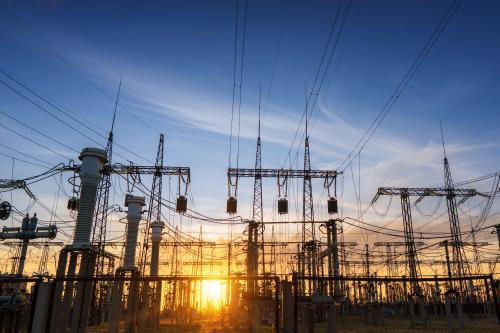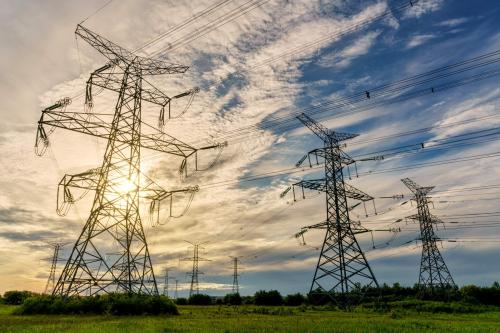Fuel subsidies consumed a whopping $4.7 trillion worldwide in 2015 and are projected to remain large in the near future. Their adverse effects are well known—excessive consumption, adverse environmental consequences, higher inequality, and reduced fiscal capacity for critical expenditures such as health and education. What is less well known is how to address the burden of higher energy prices when these subsidies are eliminated. This issue has become particularly critical today when the world is facing a post-COVID-19 spike in energy costs that is worrying governments and populations alike. Affordable energy during winter is a critical issue for many countries—since the alternative leads to excessive mortality and poverty. That is why the experience of Ukraine which eliminated energy subsidies and replaced them with targeted social assistance is so pertinent to the rest of the world.
On April 1, 2014, Russia canceled Ukraine’s natural gas discount, and Ukraine’s precarious fiscal position made it unable to continue subsidizing gas consumption for the population. The subsidies—7 percent of GDP in 2015—were eliminated through a steep residential gas tariff increase to bring them in line with the price of gas on the international market. Within a matter of months, the price of natural gas—the main source of heat, hot water, and cooking fuel for most Ukrainians living in urban settings—increased seven-fold.
In this respect, Ukraine reminds us of other countries with similar objectives and large subsidies. Iran, Egypt, and Nigeria have sought to implement price hikes of comparable magnitudes, but unlike Ukraine, they have been forced to roll back or delay such initiatives. In fact, it is even more notable as an achievement since domestic fuel price shocks are a key driver of riots, which was not the case in Ukraine. The reform was sustained in large part because of the effective measures taken to alleviate the burden on the vulnerable population.
To reduce the burden of high bills, the government scaled up its household energy assistance program—the Housing Utilities Subsidy (HUS). The HUS covered at certain times up to 40 percent or 50 percent of the households and became the largest social assistance program in Ukraine, costing around 2.5 percent of GDP.
 Source: What Are the Benefits of Government Assistance with Household Energy Bills? Evidence from Ukraine
Source: What Are the Benefits of Government Assistance with Household Energy Bills? Evidence from Ukraine
The design of Ukraine’s HUS itself is unusual, as it combines two elements not typically applied jointly to target the population—first, income assessment, and second, the expected volume of energy consumption. While there is an element of solidarity built into the benefit formula since it supports broad participation, the amount of assistance is greater for poorer households with higher utility bills. The inclusive nature of the HUS is exceptional and warranted for political economy reasons to prevent backlash and reform reversal.
So, has this approach—rare in its scale and ambition—been successful? In other words, did the assistance program mitigate the effect of the seven-fold tariff hikes to provide relief for the vulnerable segments of the population? In our paper we examine the effect of this approach and venture into design questions that may be helpful not just with future tariff reforms but also relevant to the unfolding energy pricing challenge.
We found that the HUS significantly ameliorated the fuel poverty situation of its recipients at a price tag of 1 percent to 2.5 percent of GDP, a fraction of the original fuel subsidies. It brought considerable gains in welfare for its recipients, managing to reduce the energy bills’ share of income by as much as 10 percentage points and cutting the fuel poverty rate in half. For instance, without such support the poorest quarter by income with high rate of consumption would have paid over 30 percent of their income towards just the gas consumption.
An assistance program with coverage as wide as that of the HUS, does of course, tend to drain the state coffers. Are there alternative, more targeted designs for energy assistance that perform better? What can be done to prepare for the long term?
We find that considerable savings would be achieved with only a small loss of consumer surplus if the HUS eligibility was tightened to cut the assistance in half. A gradual scale-down can be justified if vulnerable households are also incentivized to reduce their consumption and to invest in energy efficiency. We also analyzed an alternative scenario using pure income support. Suppose households below the poverty line received assistance equal to the difference between the poverty line income and their income. What we find is that linking assistance solely to income would also attain considerable savings but come at a much higher loss of welfare. That is because low-volume consumers are more able to adjust their consumption, but this is not the case for the high-volume consumers who are also poor. This points to an important policy implication that there are both welfare gains and fiscal savings by targeting high-volume-low-income consumers with subsidized energy efficiency measures. We estimate that the cost of such measures could be easily “paid back” by the savings on the gas bill over the lifetime of the investments. The cost would be a fraction of the energy assistance, implying very large savings for the government while helping secure significant gas consumption reductions over many years. In sum, the case of Ukraine demonstrates the short-term success of a large-scale energy assistance program, it buys time, but the long-term success in general depends on how, Ukraine, and the rest of the world scores on combining assistance and energy efficiency measures.








Commentary
Government assistance when household energy bills are high: Lessons from Ukraine
November 8, 2021